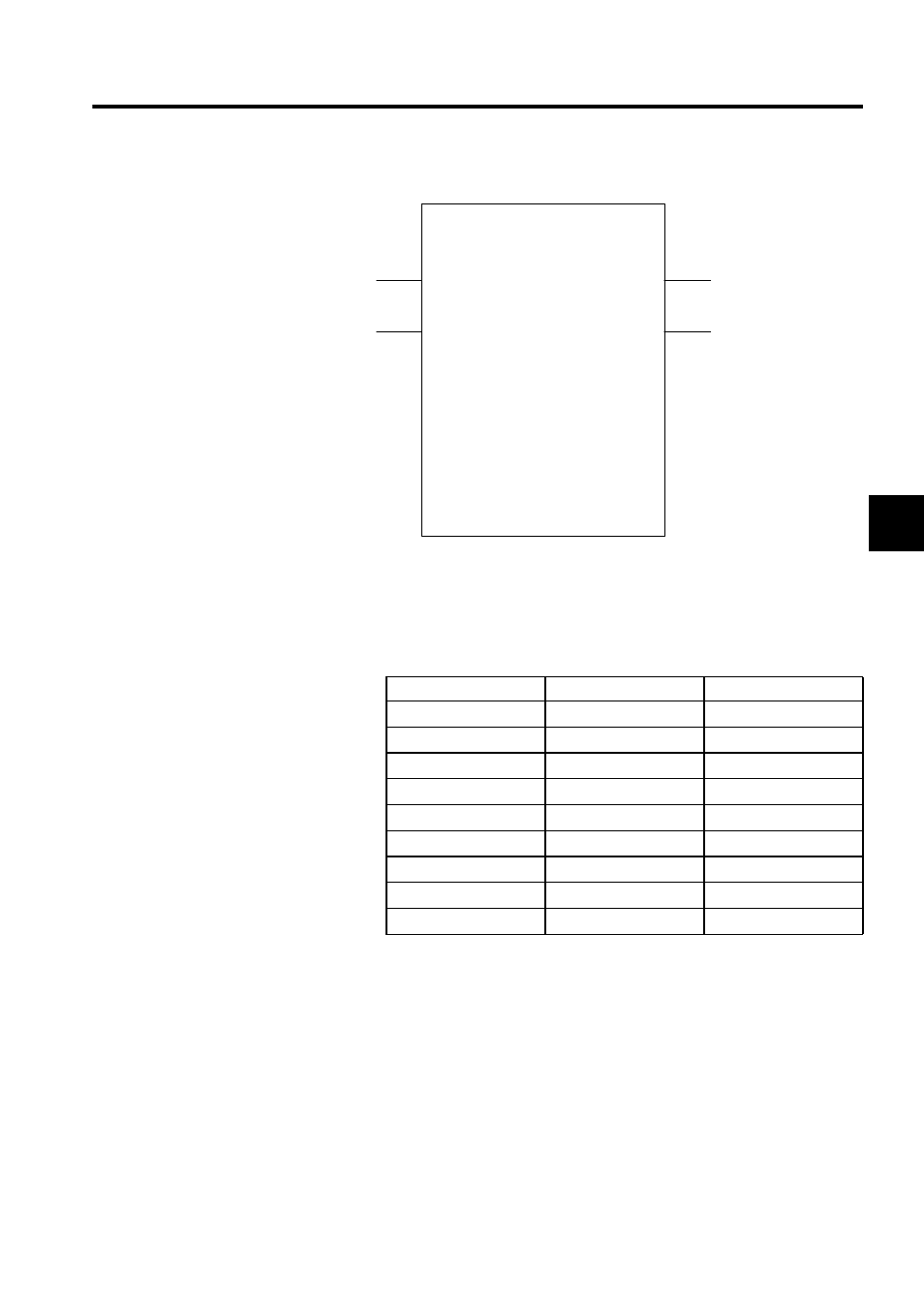5 creating the body of the function – Yaskawa MP940 User Manual
Page 78

3.5 Functions
3-31
3
The following figure shows an example of the I/O definitions of a function.
Fig 3.7 Graphic Representation of a Function 2 (Example)
I/O signal addresses are automatically allocated from the highest signal on the graphic repre-
sentation. For the example given in the figure shown above, the allocation of each I/O regis-
ter will be as shown in the following table.
Table 3.9 Allocation of I/O Registers
Note: XW00000 and YW00000 of the X and Y registers are used for bit
data.
The function I/O registers shown in the above figure are allocated automatically. The exter-
nal framework of the function is completed at this stage.
3.5.5 Creating the Body of the Function
The body of the function is created in the same way as the drawings except that the types of
register used are different. For details on the registers, see 3.6.3 Types of Register.
Name
Data Type
I/O Register
IN _ 01(BIT1)
Bit
XB000000
IN _ 02(BIT2)
Bit
XB000001
IN _ 03(FLT1)
Real number
XF00001
IN _ 04(INT1)
Integer
XW00003
IN _ 05(ADR)
Address input
AW00000
OUT _ 01(BIT3)
Bit
YB000000
OUT _ 02(BIT4)
Bit
YB000001
OUT _ 03(LNG1)
Double integer
YL00001
OUT _ 04(INT2)
Integer
YW00003
TEST
IN_01
IN_02
IN_03
IN_04
IN_05
OUT_01
OUT_02
OUT_03
OUT_04
BIT1
BIT2
FLT1
INT1
INT2
LNG1
BIT4
BIT3
===>
===>
===>
===>
ADR
Bit numeric input
Bit numeric input
Real number
numeric input
Integer numeric
input
Bit numeric output
Bit numeric output
Double integer
numeric output
Integer numeric
output
